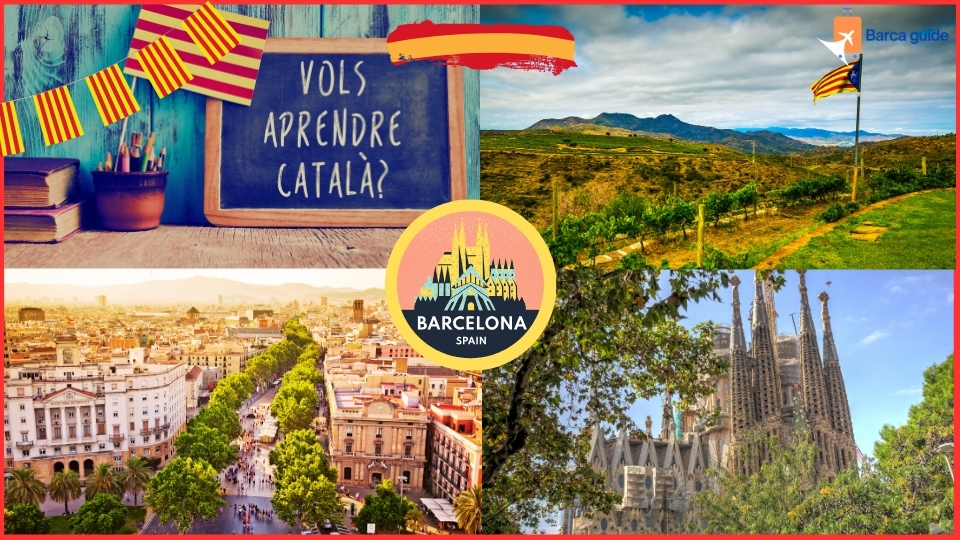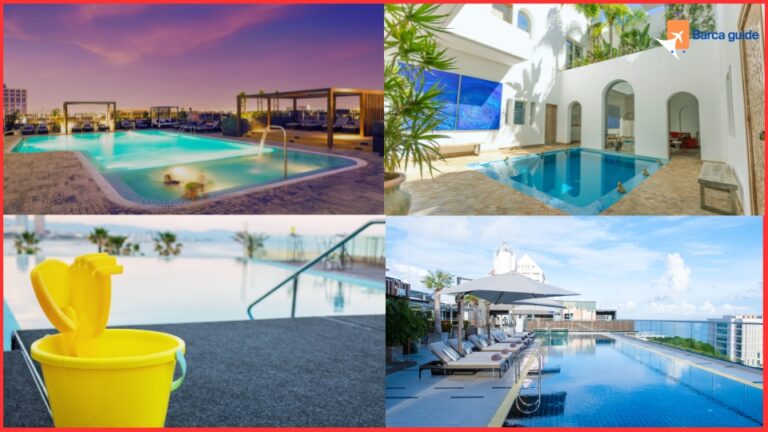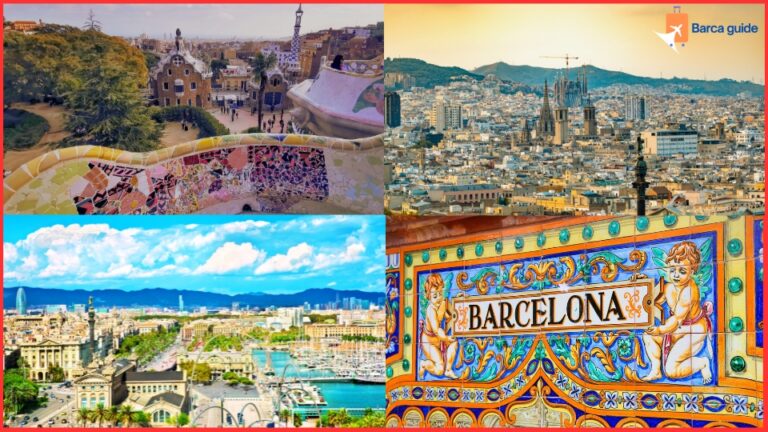Top Activities to Do in Catalonia: Your Guide to the Region
Nestled in the northeastern corner of Spain, Catalonia is a land where ancient traditions blend harmoniously with modern vibrancy. From its sun-kissed Mediterranean coastlines to its majestic Pyrenees mountains, Catalonia offers a treasure trove of activities that promise to enthrall every traveler. In this comprehensive guide, we will unveil the top activities to do in Catalonia, ensuring that your visit to this enchanting region is nothing short of extraordinary.
Geographical Information
Location and Climate
Catalonia is nestled in the northeastern corner of Spain, bordered by France and Andorra to the north, the Mediterranean Sea to the east, and the regions of Aragon and Valencia to the west and south, respectively. The coastal areas experience moderate temperatures year-round, while the inland and mountainous regions can see more extreme seasonal variations.
Best Times to Visit
The best times to visit Catalonia are during the spring (April to June) and autumn (September to November) when the weather is pleasant, and the crowds are fewer. Summer (July and August) is ideal for beachgoers but can be quite crowded and hot, especially in major cities like Barcelona.
Cultural Insights
Local Customs
Catalonia boasts a unique cultural identity distinct from the rest of Spain. Catalan, a Romance language, is widely spoken alongside Spanish. The region prides itself on its traditions, such as the Castells (human towers), Sardana dance, and lively festivals like La Mercè in Barcelona.
Cuisine
Catalan cuisine is a rich blend of Mediterranean flavors with a focus on fresh, local ingredients. Must-try dishes include Pa amb Tomàquet (bread with tomato), Escudella (meat and vegetable stew), and Crema Catalana (a custard dessert). Seafood is also prominent, given Catalonia’s extensive coastline.
Must-Visit Attractions
La Sagrada Familia
One cannot speak of Barcelona without mentioning La Sagrada Familia, the architectural marvel envisioned by Antoni Gaudí. This basilica, still under construction after more than a century, stands as a testament to Gaudí’s genius and vision. The intricate facades, each telling a different story of the life of Jesus, and the awe-inspiring interior, bathed in a kaleidoscope of colors from the stained glass windows, make it a must-visit.
Park Güell
Another Gaudí masterpiece, Park Güell is a whimsical garden complex that offers panoramic views of Barcelona. The park is dotted with colorful mosaics, serpentine benches, and the famous dragon stairway. A stroll through Park Güell feels like stepping into a fairy tale, with every corner revealing another delightful surprise.
Gothic Quarter
The Gothic Quarter is the historic heart of Barcelona, where medieval and Roman influences intertwine. Narrow, winding streets lead to hidden squares, each with its own story. Highlights include the Barcelona Cathedral, Plaça Reial, and the remnants of the Roman wall. The Gothic Quarter’s charm lies in its ability to transport visitors back in time, offering glimpses into Barcelona’s storied past.
Girona: A Medieval Gem
Girona Cathedral
Perched atop a hill, the Girona Cathedral dominates the skyline with its towering presence. Its Gothic nave, the widest in the world, and the intricate details of the Baroque facade are truly magnificent. The cathedral’s steps, famously featured in the TV series Game of Thrones, lead visitors into a realm of history and spirituality.
The Jewish Quarter
Girona’s Jewish Quarter, or El Call, is one of the best-preserved in Europe. Its labyrinthine streets, lined with stone houses and arches, whisper tales of the vibrant Jewish community that once thrived here. The Museum of Jewish History provides deeper insights into this rich cultural heritage.
Onyar River and Its Colorful Houses
The Onyar River flows through the heart of Girona, and its banks are adorned with a picturesque array of colorful houses. The reflections in the water create a scene straight out of a painting. Bridges like the Eiffel Bridge, designed by Gustave Eiffel before he built the Eiffel Tower, offer perfect vantage points for capturing the beauty of Girona.
Costa Brava: The Wild Coast
Cadaqués
Cadaqués, a quaint fishing village, has long been a haven for artists, including Salvador Dalí. Its whitewashed houses, cobbled streets, and crystal-clear waters exude a timeless charm. The Salvador Dalí House-Museum in nearby Portlligat offers a glimpse into the surreal world of the legendary artist.
Tossa de Mar
Tossa de Mar is renowned for its Vila Vella, a medieval fortress that overlooks the sea. The well-preserved walls and towers enclose a labyrinth of narrow streets, leading to stunning viewpoints and hidden beaches. Tossa de Mar’s blend of history and natural beauty makes it a quintessential Costa Brava destination.
Cap de Creus
The Cap de Creus Natural Park is a rugged headland where the Pyrenees meet the Mediterranean. Its dramatic landscapes, with windswept cliffs and hidden coves, have inspired countless artists. Hiking trails offer breathtaking vistas, and the lighthouse at the cape provides a perfect spot for contemplation.
Montserrat: The Sacred Mountain
Montserrat Monastery
The Montserrat Monastery, perched high on the rocky slopes of Montserrat Mountain, is a place of pilgrimage and spiritual solace. The basilica houses the Black Madonna, a revered statue of the Virgin Mary. The monastery’s museum boasts a remarkable collection of art, including works by Caravaggio, El Greco, and Picasso.
Sant Jeroni
For the adventurous, a hike to Sant Jeroni, the highest peak of Montserrat, is a rewarding experience. The trail offers stunning views of the jagged mountain landscape and, on clear days, even the distant Pyrenees and Mediterranean Sea. The sense of serenity and awe at the summit is unmatched.
Tarragona: Echoes of Ancient Rome
Tarragona Amphitheatre
The Tarragona Amphitheatre is a magnificent relic of the Roman Empire, where gladiators once battled. Overlooking the Mediterranean, this ancient arena evokes the grandeur of Rome and the vibrancy of Tarragona’s past. Nearby, the Roman Circus and Tarragona Cathedral add to the city’s rich historical tapestry.
The Roman Walls
The Roman Walls of Tarragona, some of the best-preserved in the Iberian Peninsula, encircle the old town. Walking along these ancient fortifications offers a glimpse into the city’s strategic importance in Roman times. The walls, adorned with towers and gates, stand as guardians of Tarragona’s illustrious heritage.
The Mediterranean Balcony
The Mediterranean Balcony is a terrace that offers sweeping views of the sea and the bustling port of Tarragona. It’s a perfect spot to relax and take in the beauty of the coastline. The nearby Rambla Nova, a lively boulevard, is lined with shops, cafes, and restaurants, making it ideal for a stroll.
The Pyrenees: Nature’s Majesty
Vall de Núria
Nestled in a remote valley, Vall de Núria is a haven for nature lovers and adventure seekers. Accessible only by a scenic rack railway, the valley offers stunning landscapes, with snow-capped peaks, lush meadows, and a tranquil lake. In winter, it transforms into a popular ski resort, while in summer, it’s perfect for hiking and picnicking.
Aigüestortes and de Sant Maurici
The Aigüestortes i Estany de Sant Maurici National Park is a pristine wilderness of alpine meadows, sparkling lakes, and dense forests. Its network of trails caters to hikers of all levels, leading to breathtaking viewpoints and serene spots for reflection. The park is a testament to the untouched beauty of the Pyrenees.
La Seu d’Urgell
La Seu d’Urgell, with its Romanesque cathedral and picturesque old town, is a gateway to the Pyrenees. The Cathedral of Santa Maria is a masterpiece of Romanesque architecture, while the Olympic Park, a legacy of the 1992 Barcelona Olympics, offers a range of outdoor activities, including kayaking and rafting.
Accommodation
Luxury: Stay at iconic hotels like Hotel Arts Barcelona or the Ritz-Carlton Abama in Costa Brava.
Budget: Opt for charming hostels and budget-friendly hotels like Generator Barcelona and Hotel Lloret Ramblas.
Transportation
Public Transport: Barcelona has an extensive metro and bus system, and regional trains connect major towns and cities.
Car Rental: Ideal for exploring rural areas and the Pyrenees at your own pace.
Packing Essentials
Summer: Light clothing, swimwear, sunscreen, and a hat.
Winter: Warm layers, especially if visiting the mountains.
Year-round: Comfortable walking shoes, a reusable water bottle, and a travel adapter.
Safety and Health Precautions
General Safety
Catalonia is generally safe for tourists, but it’s always wise to stay vigilant, especially in crowded areas.
Health Tips
Hydration: Stay hydrated, particularly during the hot summer months.
Local Health Services: Familiarize yourself with the location of the nearest hospital or clinic. European Health Insurance Card (EHIC) holders can access healthcare in Spain at reduced costs.
Budget Planning
Cost-Effective Travel Tips
Off-Peak Travel: Visit during the shoulder seasons to save on accommodation and avoid crowds.
Public Transport: Use buses and trains instead of taxis for cost-effective travel.
Local Markets: Shop and eat at local markets like La Boqueria in Barcelona for fresh, affordable food.
Local Cuisine
Must-Try Foods
Tapas: Small dishes like Patatas Bravas, Croquettes, and Jamón Ibérico.
Paella: A famous Spanish rice dish, with seafood or meat, though more typical in Valencia.
Calçots: Grilled green onions, typically eaten in winter with Romesco sauce.
Best Restaurants
Tickets: A renowned tapas bar in Barcelona by the Adrià brothers.
El Celler de Can Roca: A Michelin-starred restaurant in Girona, often listed among the best in the world.
Quimet & Quimet: A tiny but popular tapas bar in Barcelona, known for its montaditos.
Catalonia is a region of contrasts and delights, where history, culture, and natural beauty intertwine to create an unforgettable travel experience. Whether you’re wandering through the architectural wonders of Barcelona, lounging on the sun-kissed beaches of Costa Brava, or hiking in the majestic Pyrenees, Catalonia promises a myriad of adventures. Embrace the local customs, savor the exquisite cuisine, and immerse yourself in the vibrant Catalan spirit.







